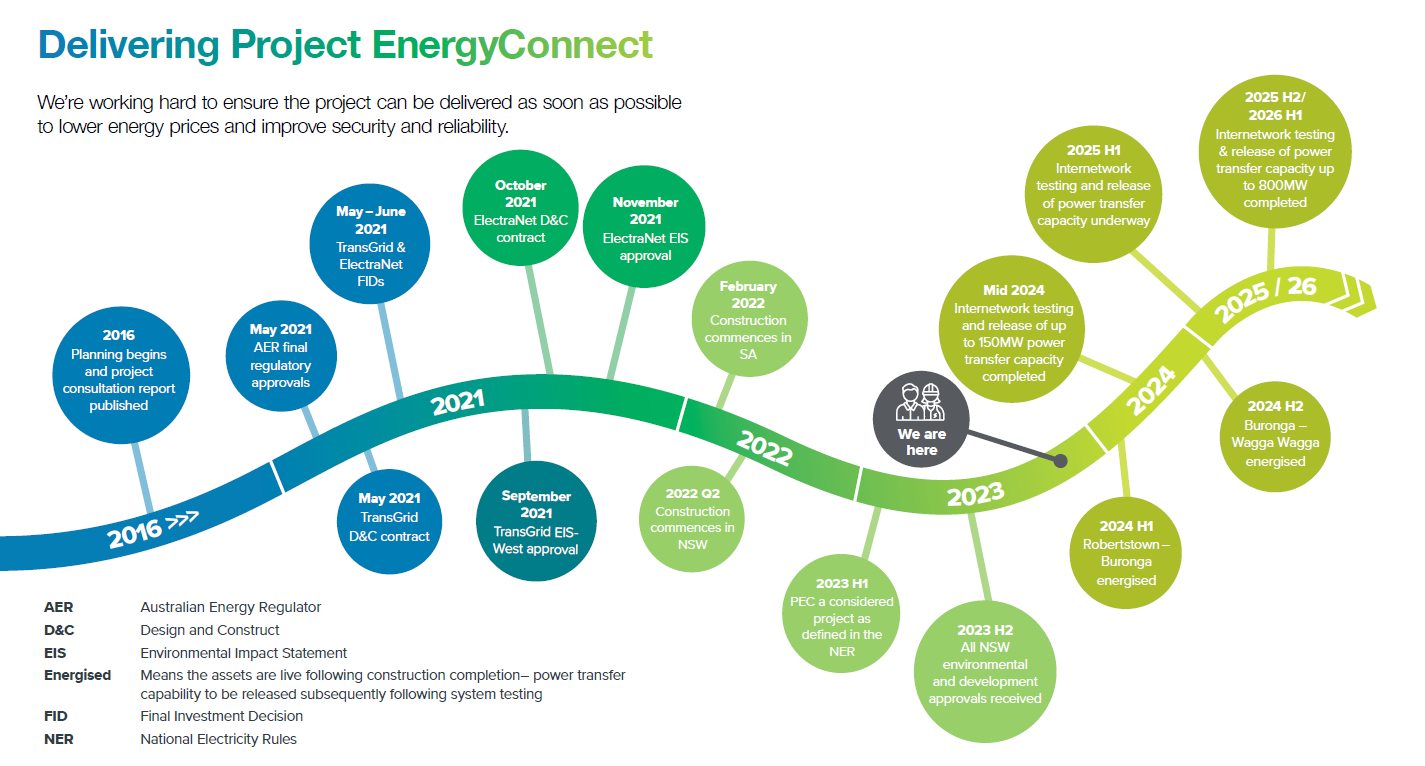Demanding smarter solutions
Energy Networks Australia has submitted a rule change proposal to the AEMC in line with recommendation 22 of the ACCC Retail Electricity Pricing Inquiry, requesting that the Demand Management Incentive Scheme (DMIS) and a Demand Management Innovation Allowance (DMIA) arrangements be extended to transmission network service providers (TNSPs)[1]. Transmission is a key part of the supply chain to deliver energy to end consumers so why is it only distribution networks who have been considered for the need to innovate and orchestrate demand response? It’s time to test for demand at the big end of time, the high voltage one!
What is proposed?
The proposed rule changes mirror those that were introduced for distribution network service providers (DNSPs) in 2015. These changes were intended to address the same shortcomings in relation to positive incentives to adopt efficient non-network alternatives as currently exist for TNSPs. The City of Sydney, TransGrid, Energy Networks Australia and Grid Australia made submissions during this process supporting the rule change and recommending that the scope of rule change request be expanded to include consideration of the current regulatory framework for demand management by transmission networks.
While the AEMC stated that “transmission businesses can, and do, contribute to effective demand management, albeit in a more limited capacity compared to the demand side and distribution businesses”[2], it concluded that the move to include transmission networks was “out of scope” and the suggestion was that “stakeholders have the ability to raise a rule change to apply a similar framework to transmission business where they consider it would better achieve the NEO”[3].
The proposed rule seeks to amend the existing National Electricity Rules (the Rules) chapter 6A to require the Australian Energy Regulator (AER) to develop a DMIS and DMIA to apply to transmission network service providers (TNSPs), and to allow the AER to determine whether to apply these arrangements to TNSPs.
As technologies evolve, there are increasing opportunities for non-network options to provide a cost-effective alternative to managing flows on the transmission network and deal with an increasingly dynamic supply/demand balance. These opportunities include the use of demand management through contracting with end-use customers, as well as the coordination of the increasing number of distributed energy resources (DER) and use of ‘smart’ technologies, alongside embedded generation and grid-scale storage. All of these activities can be considered to fall under the broad definition of ‘demand management’ activities.[4]
Further, because non-network options involve shorter time commitments than network expenditure, they also offer a valuable level of flexibility. This is particularly important where supply is becoming more variable and demand is becoming increasingly responsive (for example through solar photovoltaic products, energy efficiency and more dynamic forms of pricing). The proposed changes will further help to actively build up the market for non-network options, thereby increasing the supply of non-network alternatives and the downward competitive pressure on the prices at which network support is offered.
This rule change will promote innovation in non-network solutions and encourage TNSPs to use non-network resources at sufficient scale to address constraints that manifest at the transmission level. Non-network solutions have an important role to play in minimising total system costs and so the increased innovation in and uptake of efficient non-network solutions will benefit customers through lower transmission network and total system costs.
Customers would also have visibility over how TNSPs are using these arrangements to lower total system costs through the specific information provided to and published by the AER such as the AER’s DMIA assessment report, along with relevant information published as part of the revenue proposals and non-network options evaluated in the RIT-T process.
The DMIA provides funding for innovation and the exploration of alternatives that can be expected to lower costs to consumers in the long-term and overcome the disincentive on TNSPs in the regulatory regime to incur expenditure on research and development that will only provide benefits in the longer term.
The proposed rule change represents a proportionate and incremental development that would operate alongside and complement the existing arrangements in the Rules. The proposed rule change complements the broader network planning obligations on TNSPs under the Transmission Annual Planning Reports (TAPR) and the Regulatory Investment Test for Transmission (RIT-T) to provide information to and consult with potential non-network proponents and to evaluate non-network options. It also supports the AEMC’s final report on the co-ordination of generation and transmission investment, which highlights the role of TNSPs in considering whether non-network options can form part of efficient integrated system plan projects.
Importantly, the proposed rule affords the AER discretion as to whether to apply the DMIS and the DMIA to individual TNSPs and so it is a ‘no regrets’ change that does not preclude future evolution of the regulatory framework.
Consistent with the arrangements for DNSPs and the ‘no regrets’ nature of this change, it is proposed that the rule change allow TNSPs to apply to the AER for early application of the DMIS during the current regulatory control period. The AER would be able to apply the DMIA at the time of the next regulatory determination for each TNSP. This is a common sense rule change proposal that will benefit customers by supporting innovation and avoiding unnecessary poles and wires investment to help lower bills.
Related content
- Demand Management Incentive Scheme and Demand Management Innovation Allownce – Rule Change Request, Submission to the AEMC – 1 March, 2019
[1] Australian Competition and Consumer Commission, Restoring electricity affordability and Australia’s competitive advantage; Retail Electricity Pricing Inquiry – Final Report, June 2018, recommendation 22.
[2] AEMC, Draft Rule Determination – National Electricity Amendment (Demand management incentive scheme) Rule 2015, May 2015, p.23.
[3] AEMC ERC0177 Draft Rule determination final for publication
[4] In this Rule change proposal we predominantly use the terms ‘non-network options’ or ‘non-network solutions’ to refer to options that do not rely on investment in traditional ‘poles and wires’. This is consistent with the reference in the Rules to ‘relevant non-network options relating to demand management’ in describing the DMIS in Chapter 6.


